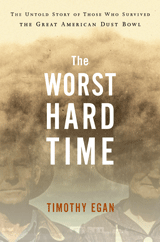Over at Design Observer there is an articulate reflection by writer Tom Vanderbilt on
the rise and fall of rock and roll graphic design. He starts with the question, "Has heavy metal graphic design run its course?," noting the current lack of readily identifiable rock icons (literally) on the order of those for Kiss, AC/DC, Van Halen, Yes, or even Asia. He makes a compelling comparison between those rock behemoths and the methods of corporate branding. He then rolls on to the bigger question: "Will graphic design ever have as great a role in popular music, or indeed any role at all, in the future?" This has been the big question ever since the 12" LP went the way of the dodo, and has presumably been answered many times over, but as an amateur graphics hound I seldom tire of hearing an astute recap of rock's graphic highlights and possible premature death. The comments that follow Vanderbilt's piece are also rich, including a fascinating story that traces (again, literally) the evolution of the Doors logo and the
Reprise riverboat.
It'd be hard to underestimate the pull album covers had for me as an impressionable youth. I still remember seeing the Violent Femmes
first album in a used record bin and
knowing, without any inkling of who the band was or what they sounded like, that it
had to be good, or at least interesting. Same for most
4AD covers, as a callow adolescent. And god knows
Blue Note* eased my way into jazz by making such wonderfully covetable objects. Heck, Jonathan Lethem knows what I'm talking about; his remembrance in
this week's New Yorker begins with him picking up two
Eno albums in part for the way they look. (The article is not online.) As for now, as a mildly jaded adult, I still see evidence of strong graphic design around today, even if it's less corporatized and more boutique-y. I guess that means it has less influence on mass culture, but where's the harm in that? If each niche audience finds, and is inspired by, niche music---and graphics---only, graphic design is no worse off. Spoken, of course, as a true amateur.
And while we're dishing cover graphics, there's a similar if less rich discussion over at
Bagatellen, focusing on jazz packaging; the jazz world right now, IMHO, has some of the most
arresting covers going.
[DO link via
Tim O Thompson]
* Speaking of Blue Note, per
this discussion, it looks like a planned reissue of the Pete La Roca (Sims) album
Basra was canned, or at least delayed (in the U.S., anyway), because of the artist's discomfort with the title, given current events. This is a forty-year-old album, mind you. The issue also gets a good going-over at
Batatellen, where we first noted it.




